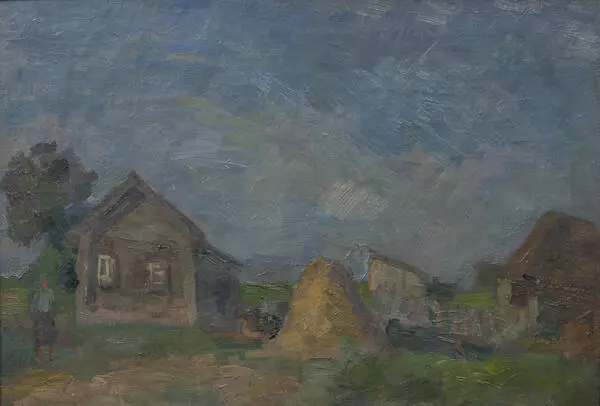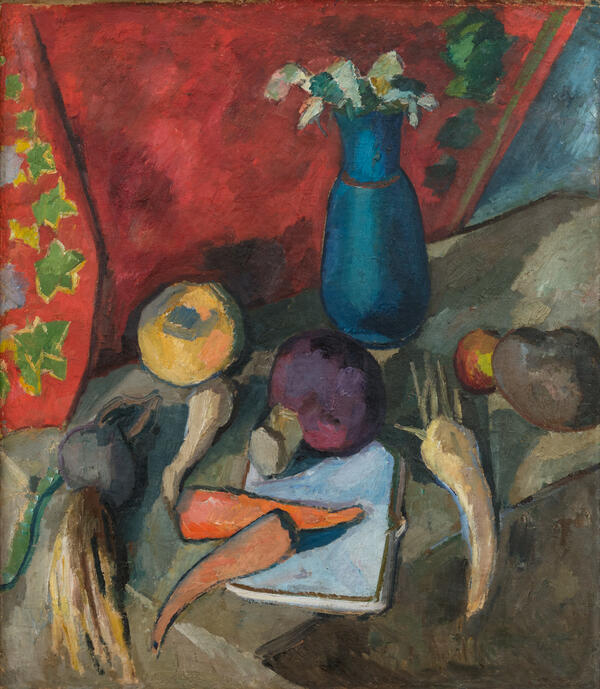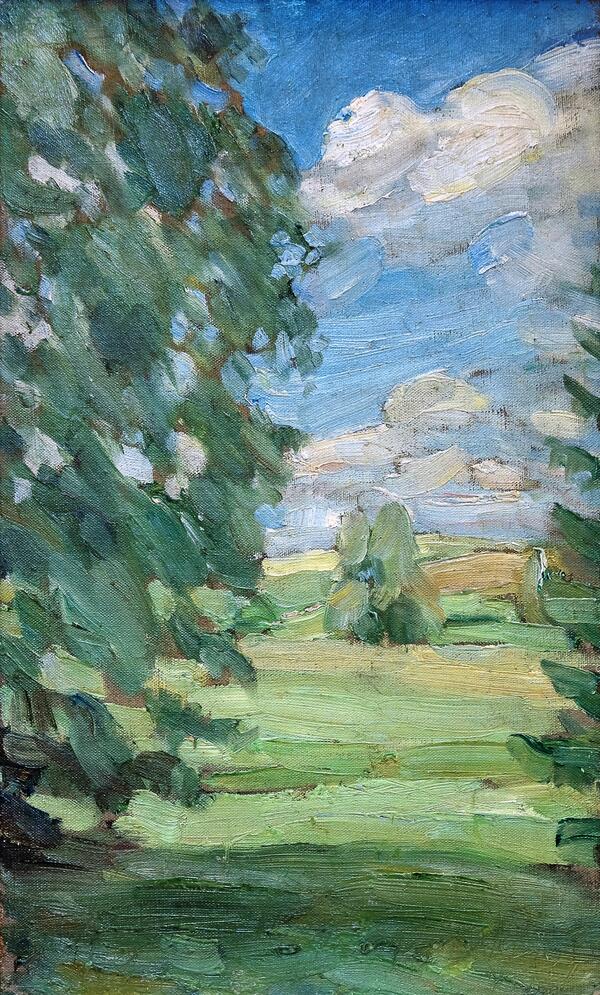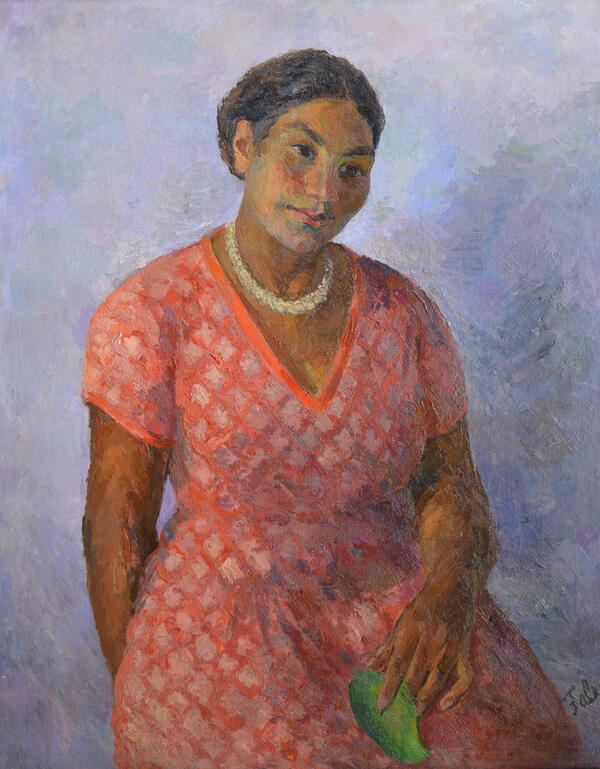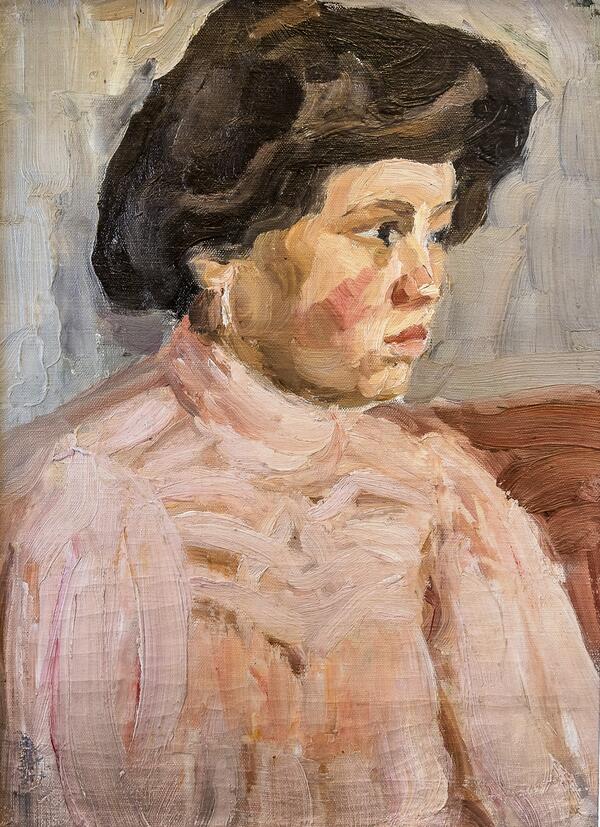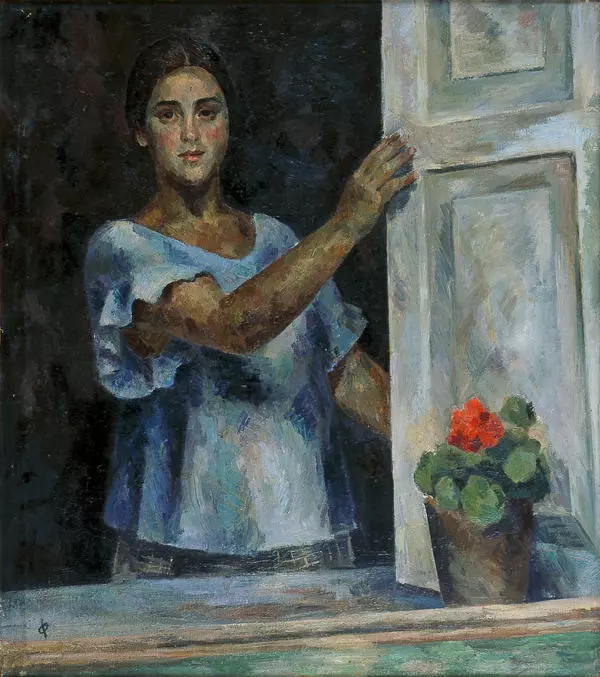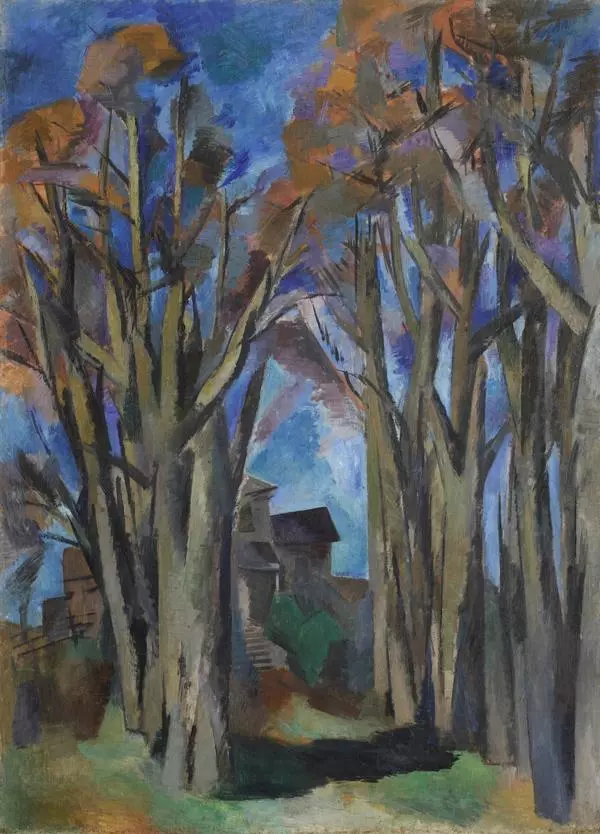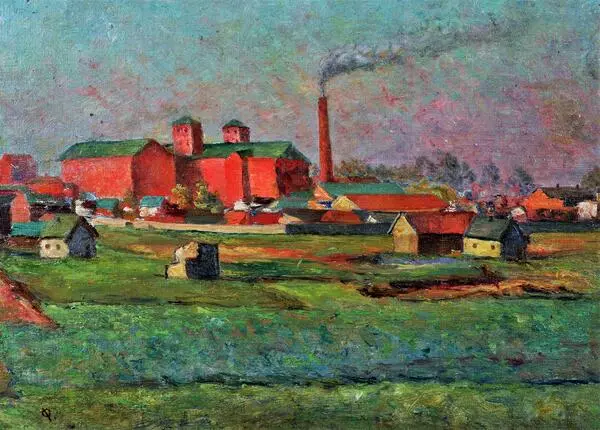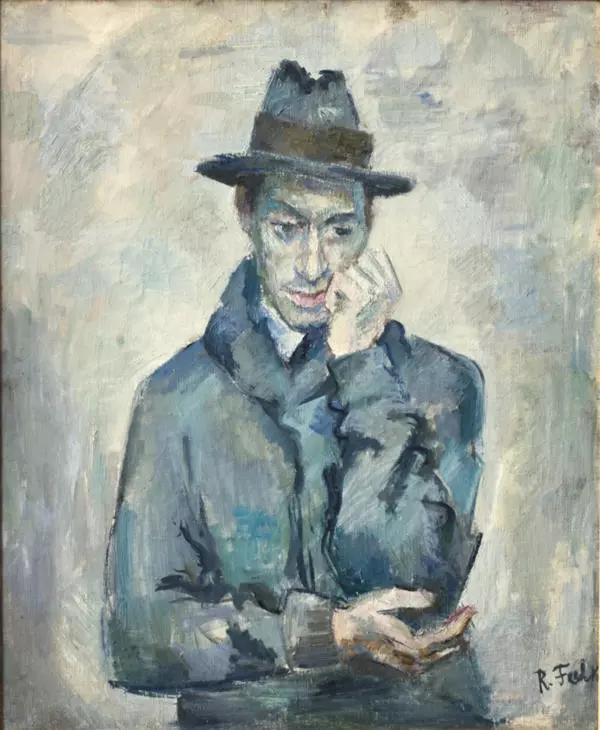Next to such stars in the firmament of Russian avant-garde painting as Kandinsky, Malevich and Tatlin, the star of Robert Falk shines as brightly. Robert Rafailovich Falk, a member and one of the founders of a major association of avant-gardists called Bubnovy Valet [The Jack of Diamonds], an artist of the Jewish origin, was born in 1886 to a family of a Moscow lawyer.
The future avant-gardist learned to draw in Yuon and Dudin’s school and in Mashkov’s studio which he attended in 1904—1905. In 1905, he became a student of the Moscow School of Painting, Sculpture and Architecture where he spent 4 years. His teachers there were outstanding Russian painters Serov and Korovin. Their influence made a clear imprint on Falk’s further work.
The legendary Bubnovy Valet founded by Falk and his supporters in early 1910 was the result of his active creative pursuits. The artist was involved in the life of his brainchild until 1916. During most of that time he lived in Moscow. Only in 1910, enabled by the money gained for one of his pictures, he undertook a long trip to Italy.
As a matter of fact, the 1910s were the years of Falk’s infatuation with French Post-Impressionism, in particular, with Cézanne. Art scholar Abram Efros even invented a new nationality for Falk, a ‘Cézannais’.
Apart from Cézanne, Robert Falk was very much attracted to such artistic movements as Cubism and Neo-Primitivism. During that period, he was active painting still-lifes and portraits in the manner characteristic of those styles — Portrait of Midhat Refatov (1915) and Self-Portrait against a Window (1916).
The trip to the Crimea was also captured in Falk’s art. It was in the canvases of the Crimean period that the artist revealed his ability to accurately render the plastique of the objects he was depicting, penetrate their essence and translate that essence to the canvas with a magnificent sense of rhythm he had mastered so well. Falk’s best known Crimean works are Crimea and Turkish Baths in Bakhchysarai.
The study Crimea. Goats. Stony Landscape belongs to that period and was painted in 1916. Not only did Falk, with his paints and brushes, manage to truthfully render the landscape typical of the mountainous part of the Crimea, but also a sense of intactness and virginity. The artist used a rich palette of brown-ocher hues to achieve this effect - on canvas the land seems warm, heated up by the Crimean sun.
After the 1917 revolution, Falk becomes a teacher of painting: from 1918 he is a teacher and dean at what would become the M.I. Surikov Moscow State Academic Art Institute, and from 1921— at the Vitebsk Art School. For three years, Falk worked for the People’s Commissariat of Enlightenment [Ministry of Education].
During all that time, Falk never stopped painting. His art got the attention of Malevich himself who wrote a review praising Falk and noting both his “cézannesque” manner and unwavering adherence to the “rules of painting”.
During his teaching period, the ideas of cubism gradually cease to interest the master. In 1928, he left for Paris where he spent 9 years, and then returned to the Soviet Union.
In the Soviet Union, indefatigable Falk continues to travel and paint — he paints in the style of Van Gogh, studies Central Asia, continues to admire the Crimea but no longer alone, pilot Andrey Yumashev who he met in 1936 when in France, keeps him company. During the post-war years, Falk’s art underwent severe criticism and for many years was forgotten.
The future avant-gardist learned to draw in Yuon and Dudin’s school and in Mashkov’s studio which he attended in 1904—1905. In 1905, he became a student of the Moscow School of Painting, Sculpture and Architecture where he spent 4 years. His teachers there were outstanding Russian painters Serov and Korovin. Their influence made a clear imprint on Falk’s further work.
The legendary Bubnovy Valet founded by Falk and his supporters in early 1910 was the result of his active creative pursuits. The artist was involved in the life of his brainchild until 1916. During most of that time he lived in Moscow. Only in 1910, enabled by the money gained for one of his pictures, he undertook a long trip to Italy.
As a matter of fact, the 1910s were the years of Falk’s infatuation with French Post-Impressionism, in particular, with Cézanne. Art scholar Abram Efros even invented a new nationality for Falk, a ‘Cézannais’.
Apart from Cézanne, Robert Falk was very much attracted to such artistic movements as Cubism and Neo-Primitivism. During that period, he was active painting still-lifes and portraits in the manner characteristic of those styles — Portrait of Midhat Refatov (1915) and Self-Portrait against a Window (1916).
The trip to the Crimea was also captured in Falk’s art. It was in the canvases of the Crimean period that the artist revealed his ability to accurately render the plastique of the objects he was depicting, penetrate their essence and translate that essence to the canvas with a magnificent sense of rhythm he had mastered so well. Falk’s best known Crimean works are Crimea and Turkish Baths in Bakhchysarai.
The study Crimea. Goats. Stony Landscape belongs to that period and was painted in 1916. Not only did Falk, with his paints and brushes, manage to truthfully render the landscape typical of the mountainous part of the Crimea, but also a sense of intactness and virginity. The artist used a rich palette of brown-ocher hues to achieve this effect - on canvas the land seems warm, heated up by the Crimean sun.
After the 1917 revolution, Falk becomes a teacher of painting: from 1918 he is a teacher and dean at what would become the M.I. Surikov Moscow State Academic Art Institute, and from 1921— at the Vitebsk Art School. For three years, Falk worked for the People’s Commissariat of Enlightenment [Ministry of Education].
During all that time, Falk never stopped painting. His art got the attention of Malevich himself who wrote a review praising Falk and noting both his “cézannesque” manner and unwavering adherence to the “rules of painting”.
During his teaching period, the ideas of cubism gradually cease to interest the master. In 1928, he left for Paris where he spent 9 years, and then returned to the Soviet Union.
In the Soviet Union, indefatigable Falk continues to travel and paint — he paints in the style of Van Gogh, studies Central Asia, continues to admire the Crimea but no longer alone, pilot Andrey Yumashev who he met in 1936 when in France, keeps him company. During the post-war years, Falk’s art underwent severe criticism and for many years was forgotten.



